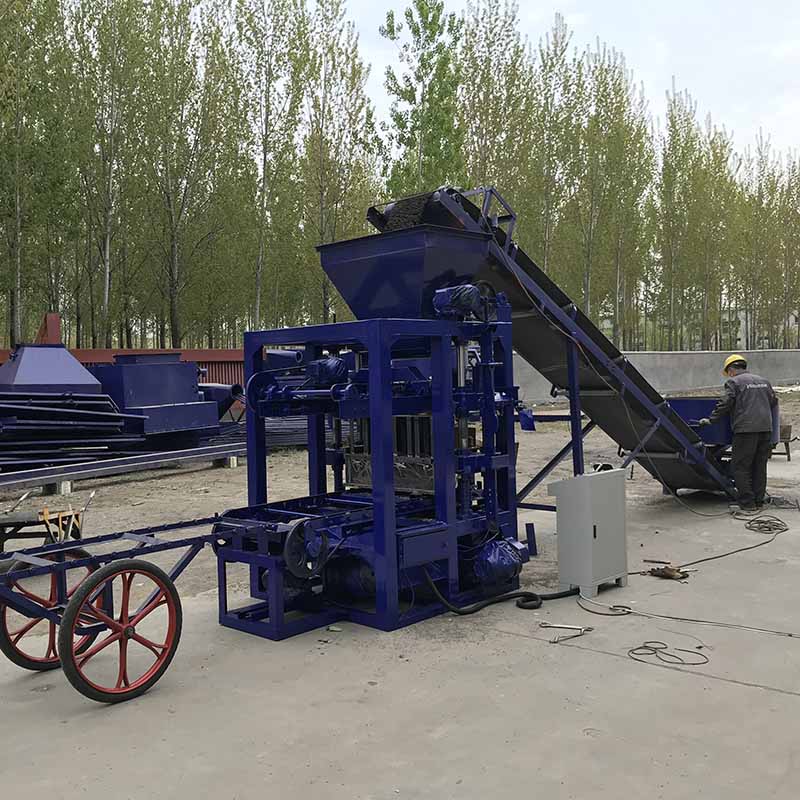 Image source: Aiwei block machine
Image source: Aiwei block machine
Introduction
Zambia’s construction industry is undergoing a dynamic transformation, driven by urbanization, infrastructure development, and the increasing demand for sustainable construction practices. At the forefront of this transformation are brick making machines, which play a pivotal role in shaping the construction landscape. This article explores the current trends and future prospects of brick making machines in Zambia, highlighting their potential to revolutionize the industry, foster sustainable practices, and contribute to the nation’s socio-economic growth.
1. The Dynamics of Zambia’s Construction Sector
Zambia’s construction sector is witnessing rapid growth due to urbanization and development needs.
- Urbanization Challenge: Urban centers require efficient housing, infrastructure, and facilities.
- Economic Growth: A thriving construction industry stimulates economic activity and investment.
2. Evolution of Brick Making in Zambia
Traditionally, brick production in Zambia relied on labor-intensive methods.
- Handcrafted Bricks: Sun-dried, hand-molded bricks were emblematic of traditional construction.
- Transition to Modernization: Introduction of brick making machines marked a significant shift.
3. Mechanized Brick Production: Shaping the Future
Brick making machines are instrumental in Zambia’s construction sector evolution.
- Increased Efficiency: Modern machines facilitate rapid production of bricks.
- Enhanced Quality: Uniform bricks lead to structurally sound and durable buildings.
4. Trends Shaping Zambia’s Construction Landscape
Several trends are shaping the use of brick making machines in Zambia’s construction.
- Sustainability: Eco-friendly brick production aligns with global green building practices.
- Design Flexibility: Modern machines enable customization of brick patterns, sizes, and textures.
5. Sustainable Practices and Eco-Friendly Construction
Mechanized brick production promotes sustainable construction practices in Zambia.
- Energy Efficiency: Advanced kiln designs reduce energy consumption and carbon emissions.
- Recycled Materials: Some machines facilitate the incorporation of recycled materials, minimizing waste.
6. Economic Growth and Local Employment
The integration of brick making machines has far-reaching economic implications.
- Micro-Enterprises: Brick-making projects empower local entrepreneurs and small businesses.
- Supply Chain Boost: Supporting local brick production stimulates the growth of ancillary industries.
7. Balancing Tradition and Innovation
Brick making machines bridge traditional craftsmanship with modern technology in Zambia.
- Cultural Continuity: Modern brick designs incorporate elements of Zambia’s architectural heritage.
- Skill Preservation: Mechanized brick production preserves traditional craftsmanship skills.
8. Collaborative Partnerships for Amplified Impact
Government, NGOs, and private sector collaborations magnify the effects of brick making machines.
- Community Engagement: Collaborative efforts ensure projects are aligned with local needs and aspirations.
- Resource Accessibility: Partnerships provide funding, expertise, and training opportunities.
9. Skills Development and Youth Empowerment
Brick making machines contribute to skills development and youth employment in Zambia.
- Training Initiatives: Youth are trained in machine operation, maintenance, and bricklaying.
- Entrepreneurial Ventures: Youth-led brick-making enterprises promote entrepreneurship and self-sufficiency.
10. Embracing Technological Advancements
Zambia’s brick making machines embrace technological advancements for enhanced efficiency.
- Digital Integration: Incorporation of AI and IoT technologies streamlines production management.
- Data-Driven Insights: Technology-driven insights optimize resource allocation and decision-making.
11. Future Prospects: Sustainable Construction for Zambia’s Future
The future of Zambia’s construction landscape relies on the growth of brick making machines.
- Affordable Housing Solutions: Mechanized brick production contributes to affordable housing initiatives.
- Sustainable Development Goals: Brick making machines align with Zambia’s sustainable development objectives.
Conclusion: Pioneering the Path to a Progressive Zambia
Zambia’s construction landscape is undergoing a paradigm shift with the integration of modern brick making machines. These machines are no longer just instruments of construction but enablers of economic growth, sustainable practices, and community empowerment. As Zambia strides forward to meet its infrastructure demands, the narrative of brick making machines serves as a testament to the potential of innovation, collaboration, and responsible practices. These machines are forging a path toward resilient urbanization, inclusive development, and a more prosperous Zambia for generations to come.
